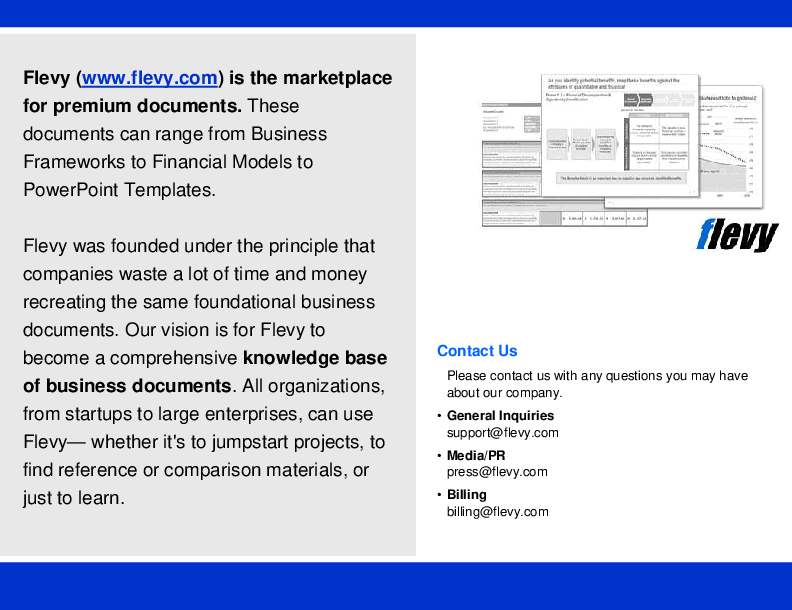Five Stages of Business Growth (PowerPoint PPT Slide Deck)
PowerPoint (PPT) 25 Slides
MATURITY MODEL PPT DESCRIPTION
This presentation introduces a framework for entrepreneurs to use when building and navigating their business from a nascent, startup state to an enterprise with a global footprint. This framework, called the 5 Stages of Business Growth, is based on the fact that all businesses experience common problems that arise at similar stages in their development.
Familiarity with the Five Stages of Business Growth allows the business owner and business consultant to develop invaluable insights, including:
• Knowing what to focus on at what stage
• Appropriate management style at each stage
• Anticipation of key challenges at various points
• Critical success factors through the company's progression
• Involvement of owner at various stages
• Evaluation of impact from governmental regulations and policies
You can increase your organization's chances of building a successful enterprise by understanding and anticipating the stages of growth.
As each stage requires a different management style, it is common for the management team to also change as the company grows from small to enterprise. In fact, as a company evolves through each stage, it is critical for the owner to know when to give up control and delegate responsibilities. Failure to do this will result in the perpetual stagnation of the organization's growth and potential.
To elaborate on the above, this presentation also discusses Critical Success Factors (CSFs) around the areas of cash, the owner's abilities, strategic planning, and other key management factors
This PowerPoint presentation also includes case examples that illustrate how various organizations have evolved and matured through each stage, from Existence (Stage 1) to Resource Maturity (Stage 5).
The presentation delves into the pivotal decisions business owners face at each stage, particularly during the Success and Take Off phases. Real-world case studies, such as Starbucks and web start-ups, provide concrete examples of how companies navigate these growth stages.
Got a question about the product? Email us at support@flevy.com or ask the author directly by using the "Ask the Author a Question" form. If you cannot view the preview above this document description, go here to view the large preview instead.
Source: Best Practices in Maturity Model, Growth Strategy, Entrepreneurship, Small Business PowerPoint Slides: Five Stages of Business Growth PowerPoint (PPT) Presentation Slide Deck, LearnPPT Consulting
MATURITY MODEL PPT SLIDES
This document is available as part of the following discounted bundle(s):
Save %!
Growth Strategy Frameworks
This bundle contains 6 total documents. See all the documents to the right.









